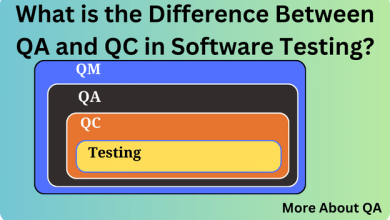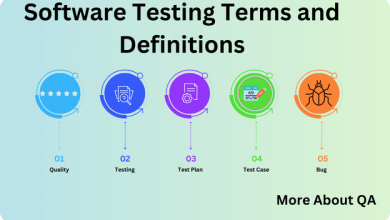Databases are essential in today’s data-driven society for efficiently organizing, maintaining, and retrieving information. There are various types of database software available, each tailored to unique use cases and business requirements.
In this blog, we’ll go over the many features and types of databases, as well as the roles they play.
Significant of Databases
Let’s explore why databases are significant and being as an IT and QA professional one must be familiar with.
1. Data Validation: QA testers often need to ensure that data entered into an application is accurately stored and retrieved from databases. Understanding how data is structured and validated within a database is vital for performing effective data validation tests.
2. Data Integrity: Databases are responsible for maintaining data integrity by enforcing constraints, relationships, and rules. QA testers must verify that the database preserves data integrity throughout different operations.
3. Data Migration Testing: When organizations migrate data from one database to another, QA professionals are responsible for testing the accuracy of the data transfer. Knowledge of SQL (Structured Query Language) and database concepts is invaluable for this task.
4. Performance Testing: Databases can significantly impact an application’s performance. QA testers should be adept at crafting performance tests that assess the efficiency of database queries, indexing, and data retrieval.
5. SQL Queries: SQL is a fundamental skill for QA professionals. Understanding SQL allows testers to write custom queries for data retrieval, update, and validation. Knowledge of SQL also aids in data extraction for test cases.
6. Security Testing: Databases store sensitive information, making security testing a priority for QA. Testers must evaluate the effectiveness of security measures, ensuring that data is protected from unauthorized access and breaches.
Different Types of Database Software
Various software uses a database that fits the needs of the business, The following are different types of database software.
Relational Databases
This type of database organizes data into tables with rows and columns. Examples include MySQL, PostgreSQL, Oracle, and SQL Server.
Key Features
These databases are ACID compliant, have strong data consistency, and well-structured data storage. They have support for SQL queries, well-suited for complex transactions and reporting.
ACID compliance ensures that database transactions are reliable and maintains data integrity by adhering to four key properties: Atomicity, Consistency, Isolation, and Durability.
Document Database
These types of databases Store data in semi-structured or JSON-like documents. Examples include MongoDB, CouchDB, and Firebase Fire Store.
Key Features
They have a flexible schema, horizontal scalability support for semi-structured data, well-suited for content management systems and real-time applications.
In-Memory Database
These types of databases Store data entirely in the system’s main memory (RAM). Examples include Redis, Memcached, and Apache Ignite.
Key Features
They are Ultra-fast data retrieval, low latency, and suitable for caching, session management, and real-time analytics.
Graph Database
They represent data as nodes and edges to model relationships. Examples include Neo4j, Amazon Neptune, and ArangoDB.
Key Features
They are efficient for querying complex relationships, and graph traversal, suitable for social networks, recommendation systems, and fraud detection.
Time-Series Database
They are Optimized for time-ordered data points, like sensor readings or log files. Examples are InfluxDB, Prometheus, TimescaleDB.
Key Features
They have efficient storage and retrieval of time-series data, aggregations, and retention policies, ideal for monitoring, IoT, and event data.
Spatial Database
They are designed for storing and querying spatial or geographic data. Examples are PostGIS (extension for PostgreSQL), MongoDB Geospatial, and Microsoft SQL Server Spatial.
Key Features
They have Geospatial indexing, support for spatial data types (points, polygons, lines), useful for location-based services, GIS (Geographic Information Systems), and map applications.
Linked Query vs. Direct SQL Query
In the world of data retrieval and manipulation, two common approaches stand out: linked queries and direct SQL queries. Each method has its advantages and use cases, and understanding the differences between them is essential for effective database interaction.
Linked Query
A linked query involves creating a connection or link between a database and an external tool or application. This connection allows for real-time data access and manipulation through the tool without the need for manual SQL queries. Linked queries are often used in data visualization tools, analytics platforms, and reporting software.
Pros:
- Simplified data access for non-technical users.
- Integration with data visualization and reporting tools.
- Real-time updates as data changes in the database.
Cons:
- Limited control over complex queries.
- May not support all database functions.
- Performance impact due to real-time data access.
Direct SQL Query
Direct SQL inquiries entail writing SQL statements by hand to communicate with a database. This approach is frequently used by developers and database managers to conduct precise, bespoke queries. It gives you total control over data retrieval, editing, and analysis.
Pros:
- Full control over query complexity.
- Supports all database functions and operations.
- Efficient for complex data manipulations.
Cons:
- Requires technical expertise in SQL.
- May not be user-friendly for non-technical users.
- Data access is not real-time and may require regular querying.
The decision between connected queries and direct SQL queries is based on your individual requirements. Linked queries are appropriate for users who demand quick and easy access to data, but direct SQL queries are required for developers and professionals who need exact control over data retrieval and processing. The selection is ultimately determined by the trade-off between user-friendliness and query flexibility.
Conclusion | Different Types of Database Software
In conclusion, the world of database software is diverse, and the choice of which type to use depends on your unique business needs and data characteristics. Whether you’re working with structured data in a relational database or managing large volumes of unstructured data in a NoSQL database, selecting the right database software is essential for efficient data management and retrieval.



